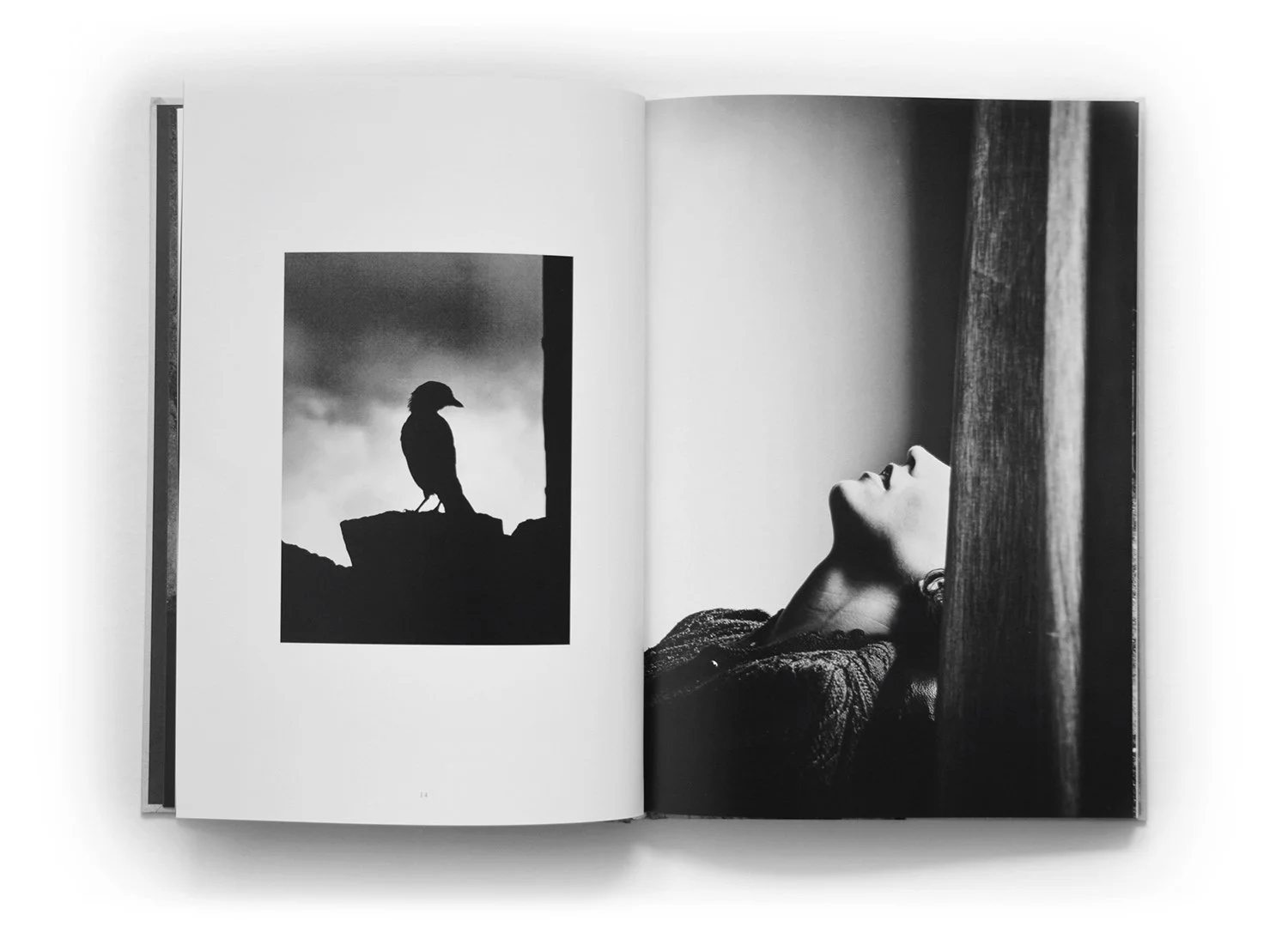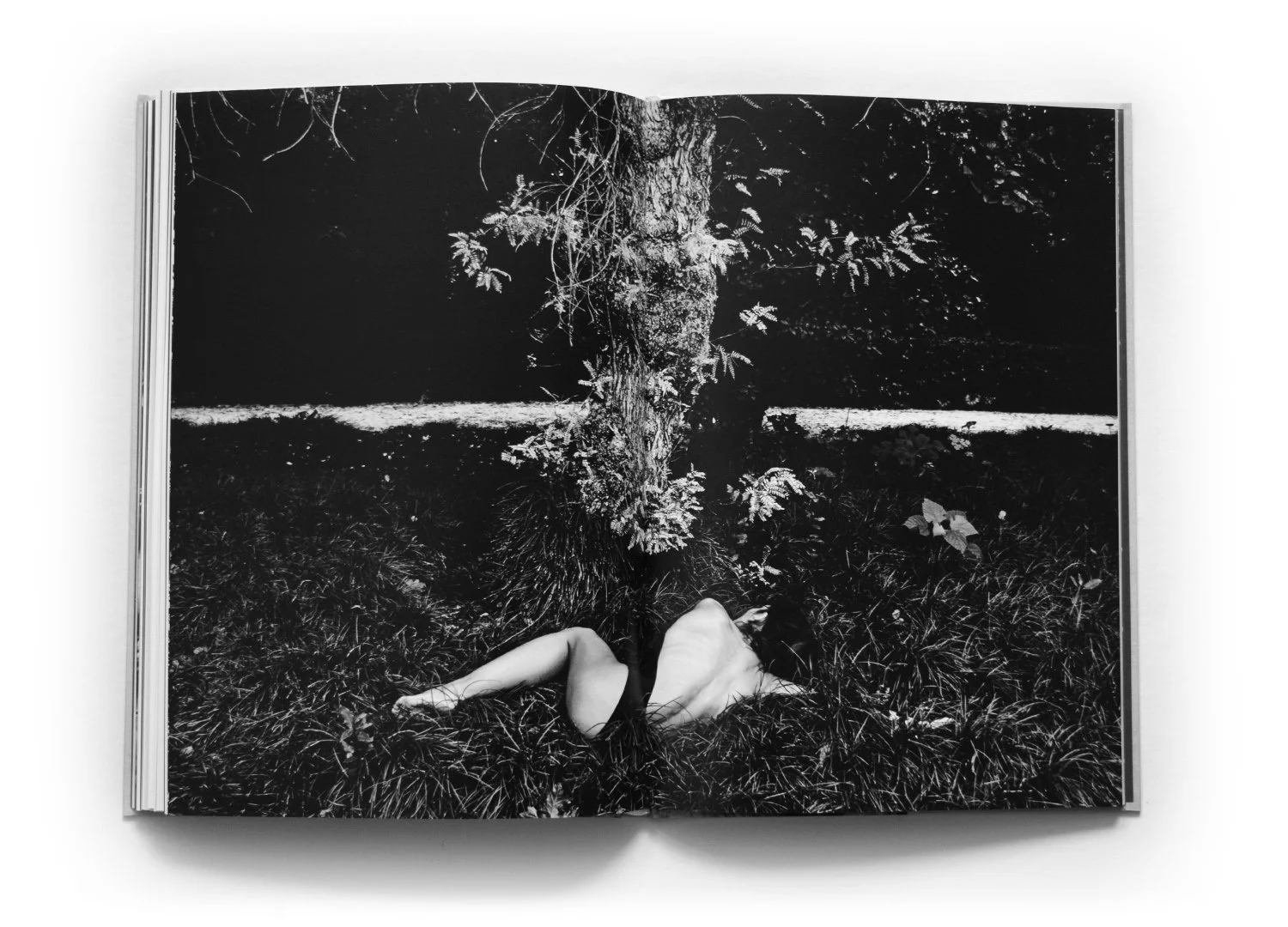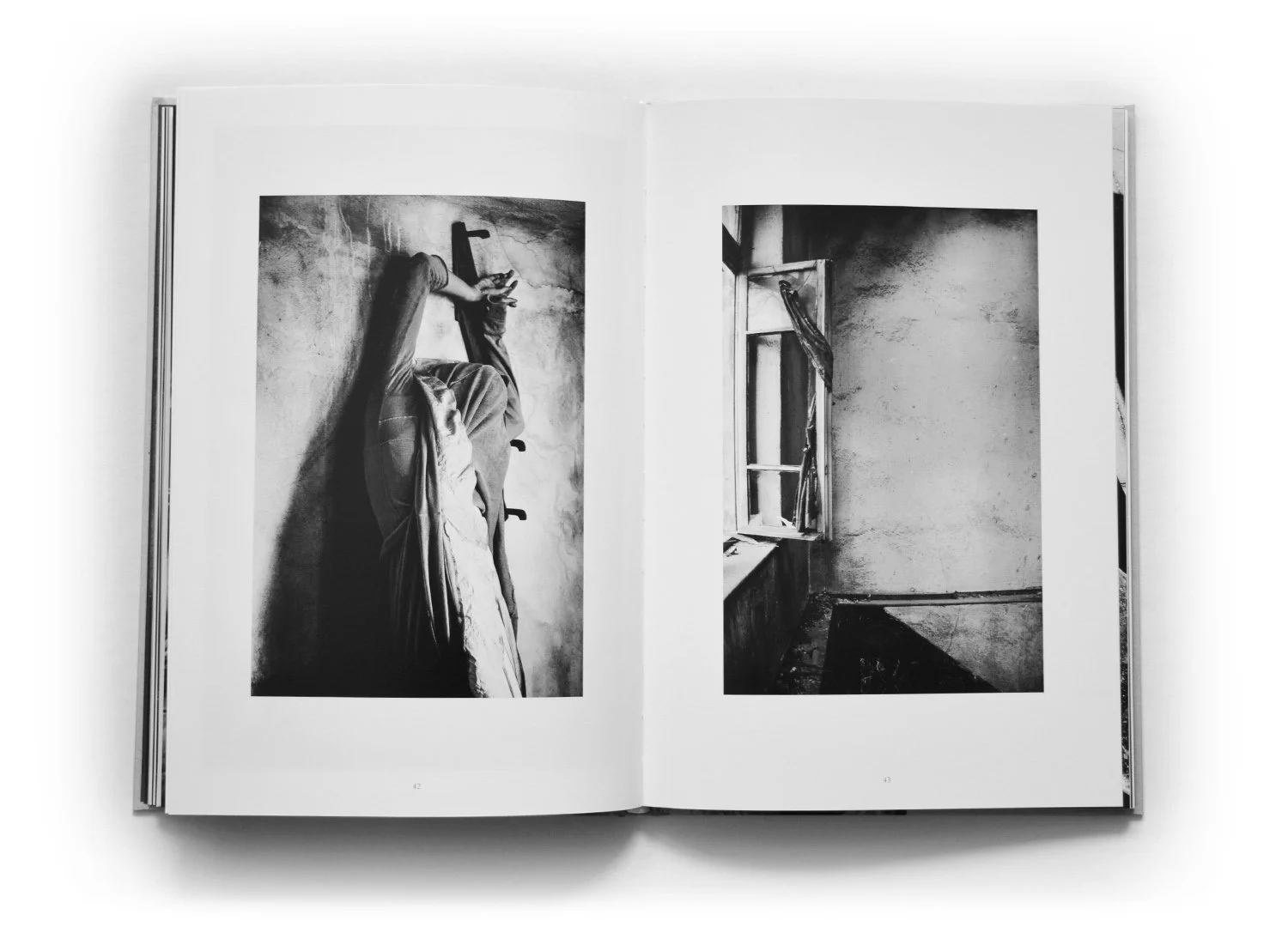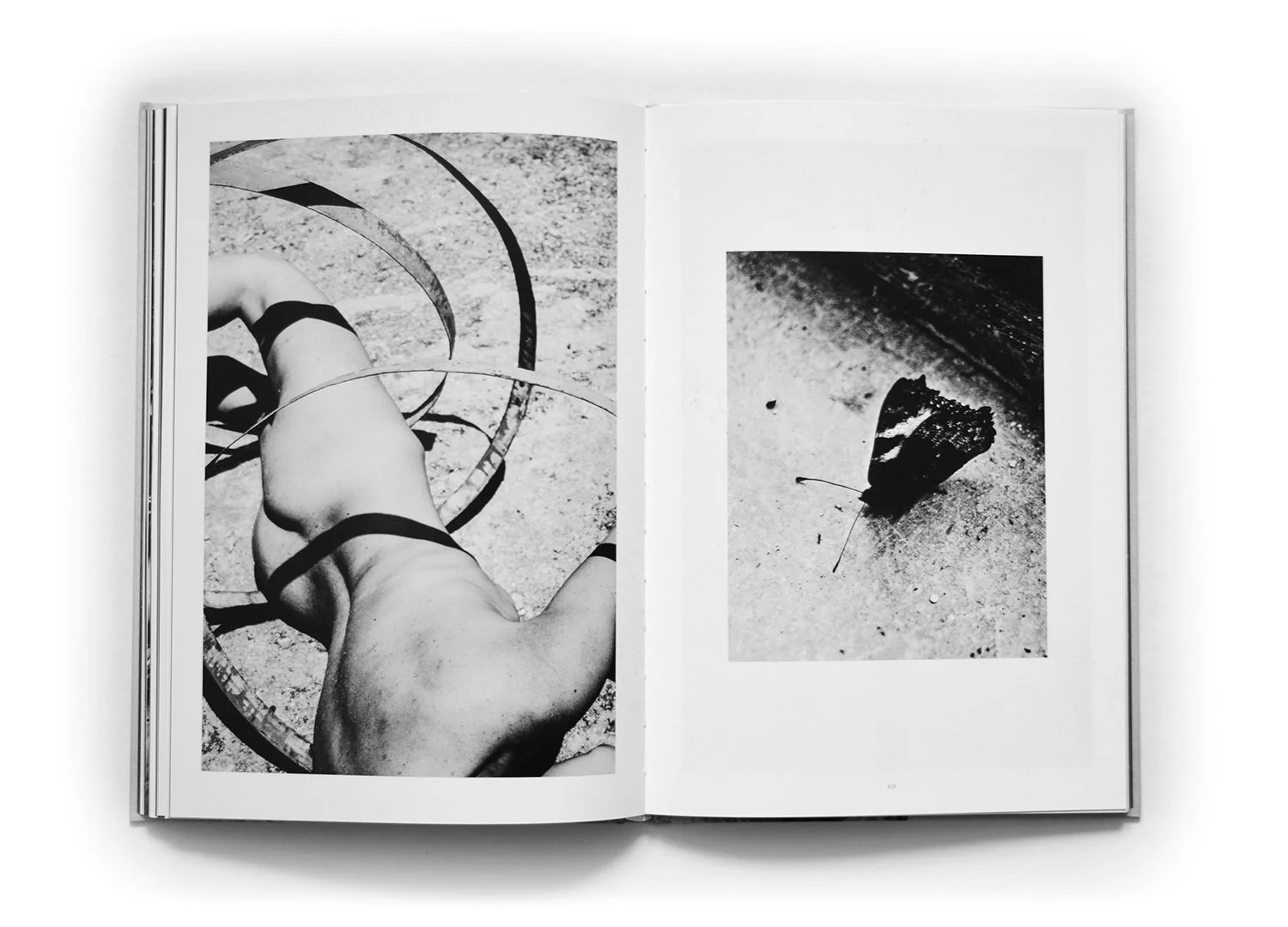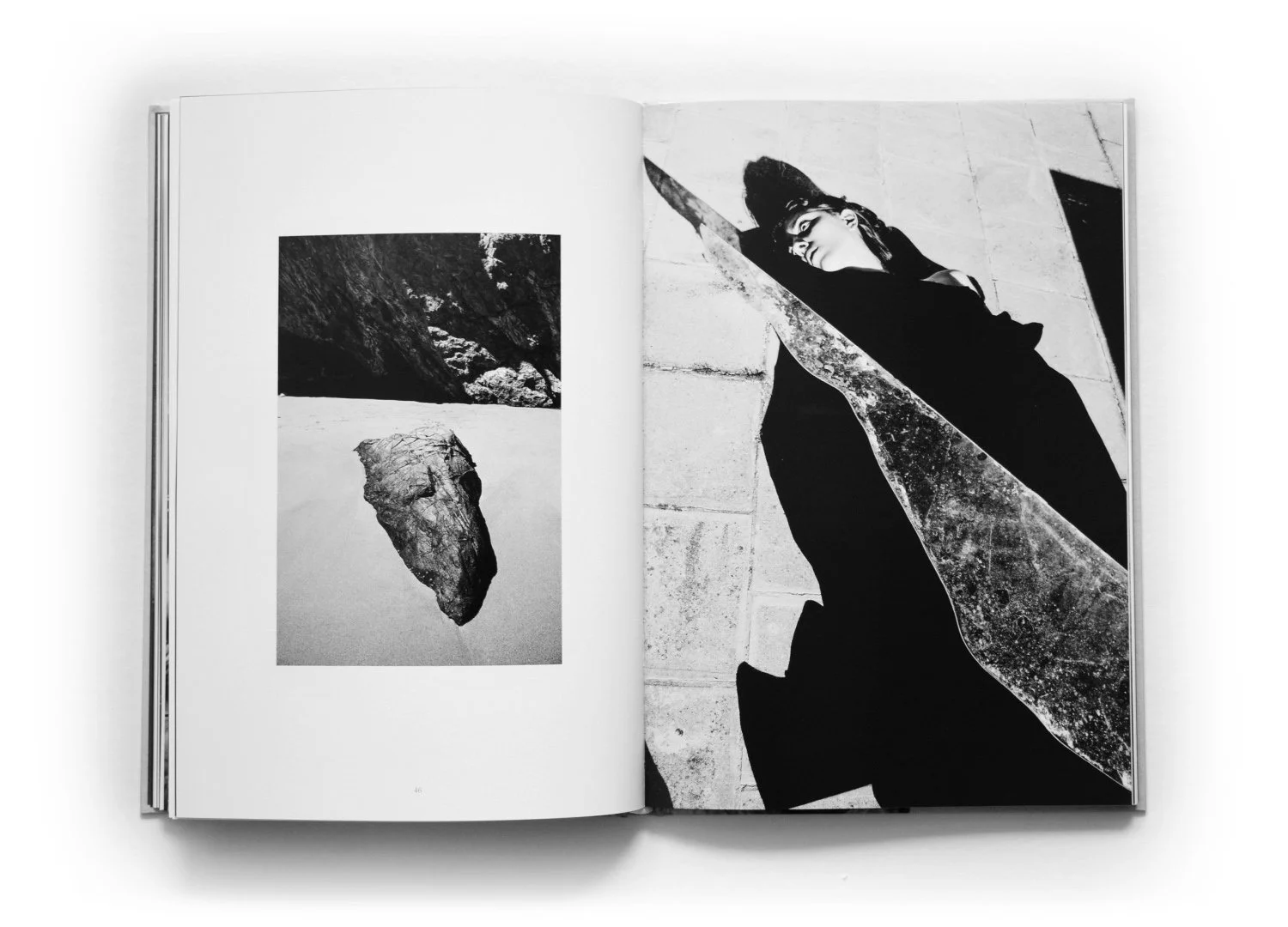ANTIGONE KOURAKOU: Transfiguration
“Everything that is encountered in my photographs comes from a dialectic processing of the dynamics between nature and human presence...”
The evocative first book by Antigone Kourakou
with texts by Erik Vroons & Costis Antoniadis
NOTE: Skeleton Key Press is SOLD OUT of this title. A limited number of copies remain available from the author, Antigone Kourakou. Please email her to inquire. Although most bookstores that previously carried the book are already out of stock, a limited number of copies might still be available from Setanta Books (London) and Micamera (Milan).
By recording thoughts, emotions, and other imprints of her reality, Antigone Kourakou explores the universal dynamic between the natural environment and human presence, and the ability of their interaction to transform us. Her photographs—most often shot in her native Greece—strikingly contrast bright light with deep, velvety shadows. Her collaborative subjects, most frequently women, often appear in contorted, twisted, or dancer-like poses, and alternately, in reflective states of longing, struggle, or lucidity. In Transfiguration, these images are thoughtfully arranged and sequenced throughout with depictions of water, stone, trees, plants, fire, and dilapidated interiors quietly assisting the book’s poetic arc. More revealing upon each viewing, Transfiguration poses more questions than it answers, while inviting viewers to participate in a fictional yet tactile world; one open to exploration and interpretation which gracefully reflects on the exuberance and struggle of existence.
PRESS:
Juxtapoz | Musée | Bildersturm | PopPhoto | Fotografi | The Eye of Photography/L'Oeil de la Photographie | BETA developments in photograpy | photo-eye | EditionsPhotoArt | Black+White Photography (UK), Issue 273 (feature)| L’intervalle
“Often, the artist is merely the messenger of what lurks behind the visible, yet it is only for the extraordinarily talented individuals to sanctify a gesture; to make their inventions come across as ‘lyrical’. While not necessarily fully controlling the sources of her inspiration, Kourakou’s acts are fuelled with ecstasy and the energy that reflects from it is seemingly determined by (and permeated with) the essence of creation — and being preserved in it.” —Erik Vroons, from the essay in Transfiguration
“Leafing through the book, we encounter hands touching the ground, naked bodies resting on the earth or a leaf transformed into a woman’s body. The dialogue with the natural environment is incessant in a way that the bodies seem to be finally immersed in nature: ‘The beginning and end of man,’ as Kourakou notes. For her, there are no answers to give, only questions that she persistently repeats while waiting for the emergence of the hidden.” —Costis Antoniadis, from the essay in Transfiguration
“Transfiguration is a book of images found in the heart, totally free of the head. It’s a book of connections, dreams, forgotten symbols, Redonesque sources of light and darkness; a book where flesh and stone are kin, where landscape and the individual body are one.” —Christopher Johnson, photo-eye
“Transfiguration is a hymn to freedom, composed of images as clear as they are mysterious. There is a secret ceremony here, a way of celebrating the living by staging it in order to magnify its capacity for play and extravagance.” —Fabien Ribery, L’intervalle
“Many of the photos in this book feature an element of surrealism or fantasy, a feeling that things are slightly askew, where subjects function as symbols, and where natural elements take on more power than they appear at first glance. The photos are sequenced in this book as if there is a hidden narrative that repeated explorations will reveal.” —Kirk McElhearn, PopPhoto
“Transfiguration confronts readers with a fictionalized reality, but one that simultaneously reflects innately real human experiences. . . Devoid of any markers of contemporary society, these photos can exist entirely independent from time.” —Nikkala Kovacevic, Musée
“[Antigone Kourakou’s] desire is to go beneath the surface of reality in search of a more authentic, if less tangible, truth.” —Elizabeth McClair Roberts, Black+White Photography
“One senses both love and hate in the background of the dramas [presented in Transfiguration]. There are big vistas here, but the project elegantly captures the scope of epic emotions while giving us a magnificent portrait of the body in motion.” —Kjetil Røed, Fotografi
“The photographic compositions of Antigone Kourakou appropriately recalls the stage rhythms of the great Mediterranean theatricals where ‘odeon’ was, in fact, the theater of civilizations...” —Pippo Pappalardo, Historian and Critic
ANTIGONE KOURAKOU (born November 1979) lives and works in Athens, Greece. Though she first became interested theoretically and technically with photography in 1998, it was 2010 when the medium became a continuing means of seeking and expressing a personal aesthetic sensibility. Since that time, her photographic work has been exhibited and published internationally. In addition to being a photographer, Kourakou works as an art conservator/restorer and is internationally recognized for her professional practice of making mosiacs. Transfiguration is her first book.
ERIK VROONS (b. 1976, The Netherlands) is a freelance editor, educator, and author of several articles and essays in the field of contemporary photography. He is also active for GUP Magazine as Chief Editor since 2010.
COSTIS ANTONIADIS (b.1949, Greece) is emeritus Professor of Photography at the University of West Attica. He is also a photographer, freelance curator, editor and author of numerous essays and articles on photography.
Published by Skeleton Key Press, April 2022
ISBN 978-82-692410-3-7
19.5 x 28 cm (7.7 x 11 in)
Hardcover, 120 pages, 80 duotone plates
Edited by Antigone Kourakou and Russell Joslin
Book design by Antigone Kourakou and Russell Joslin
Cover design by Xenophon Philippousis
Texts by Costis Antoniadis and Erik Vroons
Text in English




